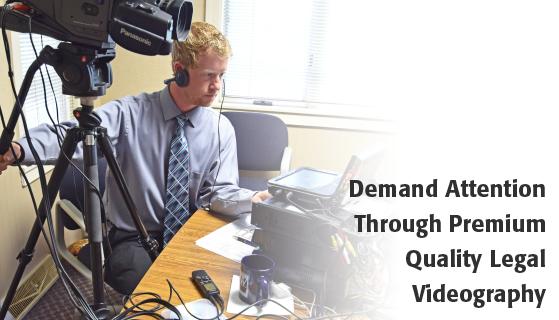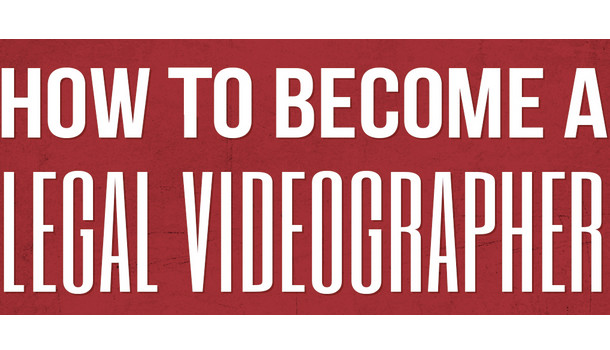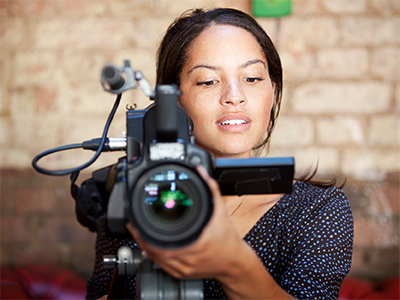The Role of Legal Videography in Documenting Depositions and Tests
Understanding the Significance of Videography in Legal Process
The combination of videography right into legal process has actually arised as a significant variable in the discussion and interpretation of evidence. By recording aesthetic components such as body language and facial expressions, videography boosts the narrative surrounding witness testaments and can exceptionally affect jury understandings.
Duty of Videography in Proof
Videography plays a significantly critical function in legal process, functioning as a powerful medium for providing proof. The assimilation of video recordings right into the lawful structure permits a more dynamic representation of realities, allowing jurors and judges to envision events as they transpired. This aesthetic documentation can include an array of materials, including surveillance video footage, tape-recorded witness statements, and professional demonstrations, every one of which can considerably enhance the evidentiary landscape.
One of the main benefits of videography is its capacity to catch subtleties that might be lost in composed accounts. Faces, body language, and situational context can supply vital insights, helping to share feelings and intentions that text alone can not. The use of video clip proof fosters an extra interesting courtroom experience, possibly assisting jurors in comprehending complex instances.
As innovation advancements, the top quality and availability of videographic proof have actually boosted, making it an indispensable part of modern-day legal techniques. Courts increasingly recognize the worth of video as a reliable resource of information, triggering legal experts to adapt their strategies for evidence presentation. Ultimately, videography offers not only to illustrate truths yet also to boost the total honesty of the judicial procedure.

Enhancing Reputation and Clarity
A considerable benefit of integrating videography in legal procedures is its ability to enhance both integrity and clearness of evidence provided in court. Videographic proof can record subtleties that created files might ignore, such as tone, body movement, and context. This graph enables judges and courts to much better understand the situations surrounding the case, consequently fostering a much more precise understanding of the events concerned.

Additionally, the clearness paid for by videography lowers the probability of misinterpretation that can arise from textual summaries. This precision is particularly critical in intricate instances, where details can be conveniently misunderstood. Inevitably, by presenting proof in a visually obtainable format, videography not just strengthens the stability of the judicial procedure but likewise sustains educated decision-making by those associated with legal procedures.
Influence On Court Perception
The addition of videographic proof considerably affects court perception, commonly resulting in extra engaged and notified considerations. Jurors are generally a lot more responsive to visual info, which can boost their understanding of intricate cases. Videography provides truths in a way that is both compelling and available, enabling jurors to get in touch with the proof on an extra individual level.
In addition, the ability to witness events as they occurred can evoke blog here psychological responses that created records or spoken testaments might fail to evoke. This emotional engagement can lead jurors to form stronger point of views concerning the reputation of witnesses and the overall narrative of the case. The graph of evidence additionally helps in making clear obscurities, making it simpler for jurors to understand the context and relevance of the information presented.
Additionally, videography can work as a powerful tool for narration, enabling attorneys to create a persuasive story that reverberates with the jury. When jurors can picture circumstances and witness vital minutes, their capability to intentional thoughtfully and reach an educated judgment is dramatically boosted, eventually impacting wikipedia reference the end result of lawful proceedings.
Best Practices for Legal Videography
Applying finest practices in lawful videography is essential for making certain that aesthetic evidence is both reliable and efficient in the court. Choose professional professionals that specialize in legal videography to make certain the technical top quality of the recordings. This includes utilizing high-resolution cameras and expert sound equipment to catch clear visuals and sound.
Second, keep proper documents throughout the recording process. This involves developing an in-depth log that includes timestamps, descriptions of the web content, and the identities of all people present. Such documentation can bolster the credibility of the video clip.

Additionally, consider the usage of suitable editing and enhancing techniques. While it is crucial to maintain the original material, small modifications for quality-- such as enhancing audio degrees-- can boost the overall presentation without changing the material.
Future Trends in Legal Videography
As lawful videography remains to develop, arising modern technologies and approaches are shaping the future landscape of visual evidence in the court (Legal Videography). One substantial pattern is the assimilation of high-definition and 4K video clip quality, boosting the clarity and information of tape-recorded testimonies and evidence. This enhanced resolution aids jurors in thoroughly examining the reputation of witnesses and the subtleties of the presented materials
Additionally, making use of expert system (AI) in video analysis is acquiring traction. AI tools can aid in identifying essential moments in video, producing best site transcripts, and also examining non-verbal communication, which gives much deeper understandings into witness reputation. Additionally, online truth (VIRTUAL REALITY) and augmented truth (AR) are poised to change exactly how proof exists, enabling jurors to immerse themselves in crime scenes or scenarios, consequently cultivating a more profound understanding of the context.
Conclusion
In recap, videography functions as an important tool in legal process, boosting the presentation of proof and enriching the overall understanding of instances. By capturing non-verbal signs and reinforcing the reliability of witness accounts, videography substantially influences court assumption and decision-making processes - Legal Videography. Following finest practices makes certain the performance of lawful videography, while arising patterns promise to further augment its function in the judicial system, inevitably fostering a much more informed and engaged legal setting
Videography plays an increasingly critical function in legal proceedings, serving as an effective medium for presenting proof.A considerable benefit of integrating videography in lawful proceedings is its capacity to improve both credibility and quality of evidence offered in court. Eventually, by providing proof in a visually easily accessible format, videography not only enhances the honesty of the judicial process however additionally sustains enlightened decision-making by those involved in lawful process.
In recap, videography offers as an important device in legal proceedings, boosting the presentation of evidence and enriching the total understanding of situations. Legal Videography. Adhering to best methods makes certain the efficiency of legal videography, while emerging trends guarantee to further augment its duty in the judicial system, ultimately fostering an extra educated and engaged lawful atmosphere